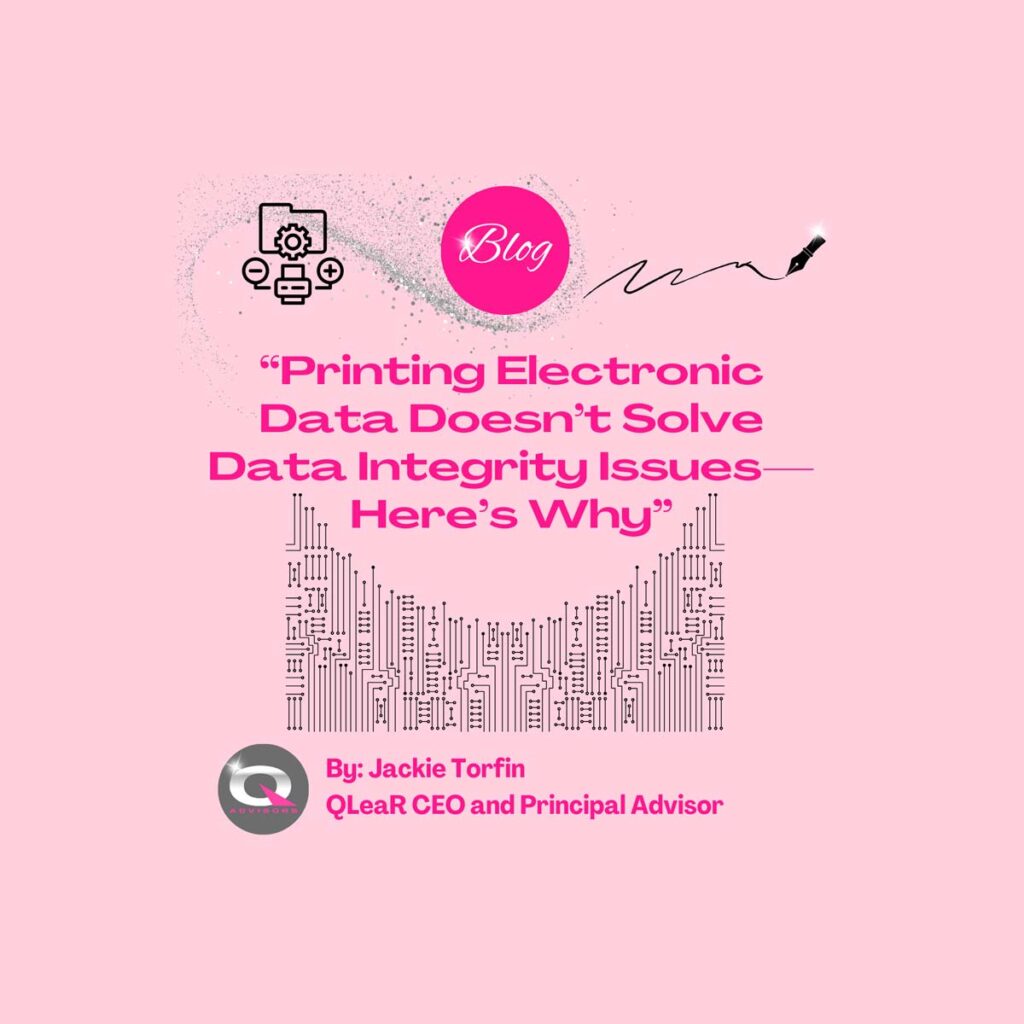It happens multiple times a year when I interact with pharma, biotech, or medtech clients. We start discussing computerized system use and data integrity, and inevitably, I hear some variation of:
“Our electronic data is printed out and stored as ‘original data,’ so there is no computerized systems data integrity issue.”
And honestly, even though I know this is patently untrue, I can understand why this belief persists.
How We Got Here: The Evolution of 21 CFR Part 11
Back in the early 1990s—when some of us were still saving data to floppy disks—the pharmaceutical industry requested FDA guidance on using computer systems to replace paper records. This led to the creation of 21 CFR Part 11: Electronic Records, Electronic Signatures (“Part 11”), which was finalized in 1997.
Key Takeaways from Part 11:
- Electronic records were not mandatory—this statement alone created widespread confusion.
- A 1999 Compliance Policy Guide (CPG) and five guidance documents attempted to clarify implementation but instead increased compliance costs, discouraged technological innovation, and had the opposite effect of what was intended.
- By 2003, the FDA revoked the CPG and guidance documents and introduced a new Guidance on the Scope and Application of Part 11 (September 3, 2003).
This 2003 guidance introduced a narrower interpretation of which records fall under Part 11. Specifically:
- If records required by predicate rules (e.g., 21 CFR 211 for drugs, 21 CFR 820 for medical devices) are maintained electronically, they are subject to Part 11.
- If electronic data is only used to generate a permanent paper record, Part 11 does not apply. This became known as the “typewriter clause”—just as a typewriter itself wouldn’t be inspected, a computer used merely to generate a paper document wouldn’t be either.
Does Printing Data Exempt It from Part 11? Not Necessarily.
The belief that printing electronic data makes the paper copy the “original” record is a misinterpretation of regulatory intent.
- If a system stores electronic records and is used for GxP purposes, the electronic data is the original record, regardless of whether you print it.
- If a system is used only to generate paper records, and the paper is the sole basis for regulatory decisions, Part 11 may not apply—but this must be clearly documented and justified.
- Regulators increasingly scrutinize these decisions, and simply printing data does not shield a system from compliance obligations.
The Modern Regulatory Landscape: Data Integrity Enforcement
In recent years, FDA 483 observations and Warning Letter trends have shown stricter and more consistent enforcement of data integrity rules.
With the release of the 2018 Guidance on Data Integrity and Compliance with Drug CGMP (December 2018), the FDA has clarified that:
- Data integrity is essential for compliance with 21 CFR 211 (CGMP for drugs).
- Electronic records must be trustworthy, reliable, and accurate—and simply printing them does not eliminate the need for electronic controls.
- Modern computer systems offer features that facilitate Part 11 compliance, but these features must be actively implemented—compliance is not automatic.
Final Thought:
✅ Printing data and storing it as a paper record? That’s nice.
❌ But it’s not the original record.
The electronic record is the true original, and computerized system data integrity must be proactively managed. The good news? Today’s technology makes compliance easier—but only if properly implemented.
Want to ensure your data integrity practices align with FDA expectations? Take a critical look at your electronic systems and documentation strategies—before the regulators do. Get in touch with contact@QLeaRAdvisors.com for help, guidance or just to chat!

